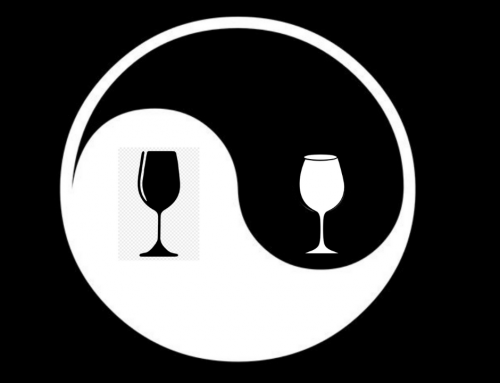The gut is a fundamental area of detox. When considering gastrointestinal cleansing, the focus is often on what happening at the exit point. It’s very easy to forget about the entry point – the mouth. Consider these tips for developing your wholistic oral care protocol and enhance your detox processes.
Inspect your tongue first thing in the morning.
What’s lying there? By minimising toxin intake and increasing natural wholefoods, you may waken with a fusty stale taste and furry coating on your tongue. The Ayurvedic tradition understands this build up on the tongue is a representation of Ama, or toxins, being released from the body.
A part of the krija yoga tradition is to practice daily tongue scraping to purify the body.
The tongue can be scraped off with a stainless steel or copper tongue scraper, shaped like a long horseshoe and designed for ease of use. If this is not available, you can use a teaspoon. The important thing is to bring it out of your mouth. Brushing the tongue with your toothbrush is not advisable as this merely moves the toxins around the mouth and doesn’t actually get rid of them. Some toothbrushes have ridges moulded on the back of the bristle head for tongue scraping, though personally I’ve found they don’t remove much at all.
Pull some oil
Another Ayurvedic tradition is Kavala Gandoosha, or “pulling oil”. This involves taking a mouthful of organic vegetable or nut oil and swishing it around your mouth for ten or fifteen minutes. Ayurvedic doctor, Dr Karach suggests you ‘sip, suck and pull through the teeth’. By the time you’ve finished swishing sucking and pulling, you will spit out a transform blob of white goo.
Maybe Kavala Gandoosha provides a gentle antibacterial effect, stimulates saliva function and tones and massages the jaw and associated muscles, I’m not entirely sure. However, the process certainly soothes minor tooth pain and irritation. For many, it provides healing from gum disease. There are claims for its teeth whitening effect if practiced consistently, as well as a long list of other complaints of the entire body.
Brush your pearly whites
Brushing your teeth twice daily is general dental hygiene protocol. Follow your dentist’s advice on correct technique. In terms of toothpaste use, chose one that isn’t filled with synthetic chemicals, sodium lauyl sulphate (SLS). As far as I understand, there is little evidence of fluoride supporting teeth health. My recommendation is to use plant based, gel toothpastes. Flossing regularly is also fundamental for maintaining good health hygiene. Discipline may be the fundamental necessary element in this.
Nasal cleansing
Neti douching is another form of cleansing subscribed to by Ayurvedic practitioners. It is highly recommended for everyone, but particularly for people with sinusitis or recurrent nose and throat problems, often a result of postnasal drip.
Use a neti pot, small teapot or even a spouted jug. Using a solution to 0.9mmol/l of salt and water (the same concentration as our blood) means that no duress is placed upon the mucous membranes of the nostrils. Get around 60 mL of warm water and add a pinch of salt. Taste it, and add more or less until it tastes like weak seawater. A solution that is too strong or too weak will create a stinging sensation. You’ll quickly get the hang of the correct concentration after a few mistakes.
Insert the spout into the right nostril, bend your head to the left and lean it slightly forward, on a 45-degree angle. Then pour the water in. It will flow up the nostril and out the left nostril. Pour for 5-10 seconds, or what ever is comfortable. A quick bushman’s blow removes any lingering water and mucous. Then do the other side.
Washing the mucous membranes in this way, by removing any built up mucous, tones the tissue and allows the local immune cells (mucosa associated lymphoid tissue) to function optimally. This consequently increases immunity, may reduce postnasal drip and minimises stuffiness of the nose and sinuses. It can also enhance the sense of smell, which enriches your taste sensation.
What are you putting in there?
Consider what’s going into your mouth. Fresh, wholefood in general enhances dental health. Chomping on raw, fresh foods keeps the teeth doing what they are made for. Eating excessive refined carbohydrates doesn’t. The dental health of the Polynesian Tokelauan people is testimony to this fact. There was a four to eight fold increase in dental decay in adults and adolescents over the 30-year period that western foods replaced the traditional wholefoods diet. Additionally, people’s teeth were no longer straight.
Austrian physician Dr Mayr’s detoxification protocol heavily emphasises the importance of correct chewing. The protocol involves a weeklong process of retraining chewing and saliva release to ensure adequate ensalivation occurs, to then affect the entire digestive tract. How many chews do you do per mouthful?
What is coming out?
Finally, being aware of what’s leaving your mouth is another element of mouth detox. Are you saying negative or toxic things? It’s not hard to fall into patterns of thinking and expressing that don’t serve anyone. Sometimes there is a perverse enjoyment in speaking negatively or badly about something, or somebody. Contemporary common parlance isn’t exactly overflowing with positive or inspiring words. But it can be. Let’s start a “fresh word” revolution, and contribute some clear, vital concepts to world around us.
Watch your mouth, and watch the results!
This is one element of Sparkle Detox Course – a step-by-step, effective and safe, body tissue cleansing process designed by Naturopath Sally Mathrick. If you haven’t already, join Sparkle Detox. You’ll have life-time access to wholistic, doable, ‘delicious-with-benefits’ practices to keep your precious body-mind healthy, fresh and vital. JOIN NOW
Copyright Sally Mathrick – please cite www.sparklewell.com.au if using this information
Written Aug 2009 and previously published in Wellbeing Australia issue #124






